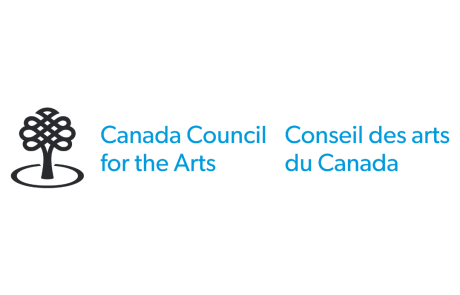Re-Imagining Indigenous Portraiture: Will Wilson’s Critical Indigenous Photographic Exchange
By Gloria Bell
Through collaboration with my sitters, I want to indigenize the photographic exchange. We will generate new forms of authority and autonomy, not assimilation, as the basis for a re-imagined vision of who we are as Native people. – Will Wilson
Diné (Navajo) artist Will Wilson is currently working on a portraiture project entitled Critical Indigenous Photographic Exchange. He carried out a portion of this work at Indian Art Market 2012 in Santa Fe, New Mexico.
Wilson used a nineteenth-century photographic technique called wet-plate collodion, popularized after the Great World Exhibition in London, 1851. This process is currently experiencing resurgence and is the very same method that that was used by American photographer Edward Curtis.(1)
Lara Evans on the set holding a QR code for her blog. Photo Credit: Gloria Bell
Wilson aims to revise a photographic history perpetuated by people including Curtis that has largely positioned indigenous peoples outside of the picture frame, existing in an allochronic space, what cultural anthropologist Johannes Fabian calls a “denial of co-evalness’’ in time and space. Through his photography, Wilson presents indigenous subjects today.
Technique
During Indian Art Market 2012, Wilson photographed several prominent Native American and First Nations art historians and artists including Lara Evans, Joe Horse Capture, Gerald McMaster, Nicholas Galanin, Jessica Metcalfe as well as curators Gaylord Torrence and Janet Berlo.
Will Wilson pouring the collodion onto the plate. Photo Credit: Gloria Bell
Will Wilson pouring off the collodion. Photo Credit: Gloria Bell
Wilson set up his studio at the New Mexico Museum of Fine Arts. After capturing an image on a tin plate, Wilson worked quickly. First he cleaned the tin plate, coated it with collodion, and then sensitized it in a bath containing silver nitrate. The negative was then fixed. The whole process was completed before the collodion dries, giving it the popular name ‘’wet-plate’’ process.(2)
Wilson scanned the tintypes (also known as ferrotypes) that he created and will use them in future projects; he is currently interested in creating a digital app with all the tintypes, and often uses QR codes in his artwork (see for example his textile project ‘’eye dazzler’’).
Will Wilson immersing tintype in solution. Photo Credit: Gloria Bell
VIEWING
The aesthetic produced by this technique was visually rewarding for its timeless quality, the details of each subject were crisply presented in shades of grey.
Nicholas Galanin tintype developing. Photo Credit: Gloria Bell
Many people remarked on how old the photographs looked, as if the tintype was indeed from 161 years ago. To alert the viewer to the twenty-first century reality of indigenous presence, many sitters included technology like Ipads in their portraits.
Tintypes drying. Photo Credit: Gloria Bell
For example, Lara Evans, a Cherokee art historian, had her portrait taken with a QR scan of her blog (see the first photograph in this essay) which will enable future viewers to scan the code and view her writing on contemporary Native art.
Behind the Lens: Sitting I also had the opportunity to sit behind the camera lens, and while it was a little nerve-racking, it also allowed me to think about the history of indigenous portraiture.
When I sat there, I thought about all my relations who had sat behind the lens and one portrait in particular of my Cree and Métis family from the Red River Settlement, Winnipeg, in the late 1850s.
In the tintype, my relatives sit up straight, with their Métis sashes prominently on display. They gaze directly into the lens with serious but not stoic faces.
My tintype developing in solution. Photo Credit: Gloria Bell
Did my family and other indigenous subjects, have agency within their portraits? While this question has multiple answers, I think that my relations presented themselves as active subjects. They were recording their presence in a direct and immediate way.
Away from the lens, I continue to ponder about how images and reflections become part of our stories as indigenous people.
Will Wilson behind the lens. Photo Credit: G Bell
Wilson’s work carries on this story of representation, shifting the viewer and sitter relationship to one of indigenous presence, fracturing the allochronic glass.
To learn more about Wilson’s work you can check out his website here: http://www.hzgstudio.org/, and blog here: http://pomonavajo.blogspot.ca/
This artist profile was written as part of the Aboriginal Curatorial Collective’s Artist Profile Series.
Ackerman, Nancy. Strong Hearts: Native American Visions and Voices. New York: Aperture, 1995.
Horsecapture, George P. ‘’Forward.’’ Native Nations: Native Americans on Curtis. http://edwardcurtis.com/native-americans-on-curtis#ch3.
Greenhill, Ralph. Early Photography in Canada. Toronto: Oxford University Press, 1965.
(Article and Photography by Gloria Bell).
1. Known as the ‘’shadow catcher” to some Native American communities, Curtis was an American photographer who dedicated his life to picturing many indigenous communities by travelling throughout North America. His images are some of the most beautiful and well-known nineteenth-century portraits of indigenous peoples in North America. He took over 40 000 images in addition to recording dances, songs, and other cultural practices. While Curtis’ images are critiqued for their Romanization and displacement of indigenous peoples, they also provided a lens onto Native peoples’ lives. George P. Horsecapture ‘’Forward,’’ Native Nations: Native Americans on Curtis, website accessed September 5, 2012, http://edwardcurtis.com/native-americans-on-curtis#ch3).
2. Ralph Greenhill, Early Photography in Canada, (Toronto: Oxford University Press, 30).
 Gloria Bell’s research and teaching examines visual culture focusing on Indigenous arts of the Americas, primarily from the nineteenth century through to contemporary manifestations. Currently, her research focuses on exhibition histories of First Nations, Métis and Inuit arts in the early twentieth century in Italy, Global Indigenous studies, decolonizing and anti-colonial methodologies, materiality studies, global histories of body art, and the importance of art as living history.
Gloria Bell’s research and teaching examines visual culture focusing on Indigenous arts of the Americas, primarily from the nineteenth century through to contemporary manifestations. Currently, her research focuses on exhibition histories of First Nations, Métis and Inuit arts in the early twentieth century in Italy, Global Indigenous studies, decolonizing and anti-colonial methodologies, materiality studies, global histories of body art, and the importance of art as living history.






.JPG)











